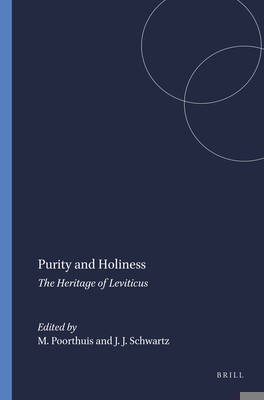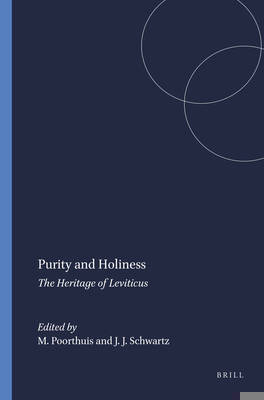
- Retrait gratuit dans votre magasin Club
- 7.000.000 titres dans notre catalogue
- Payer en toute sécurité
- Toujours un magasin près de chez vous
- Retrait gratuit dans votre magasin Club
- 7.000.0000 titres dans notre catalogue
- Payer en toute sécurité
- Toujours un magasin près de chez vous
Purity and Holiness
The Heritage of Leviticus
283,95 €
+ 567 points
Description
Purity has long been recognized as one of the essential drives which determines humankind's relationship with the holy. Codes of purity and impurity, dealing with such far-ranging topics as 'external stains' and 'inner remorse', represent the physical and 'bodily' side of religious experience and provide the key to the understanding of human orientation to nature, and the structure of society, including even relationships between the sexes.
Starting with the Hebrew Bible, a number of articles study some rather neglected passages from both exegetical and cultural-anthropological standpoints. Next, it is shown that the concept of purity is far more central to the New Testament than previously thought. Luke is portrayed as a Jewish-oriented writer. The discussion of purity in Mark is compared with Rabbinical and Qumranic material. Patristic discussions of purity reflect both allegorical and literal interpretations, while rabbinical rulings display a fine sense for detail and realia. Biblical references to illness are interpreted both in Christian and Jewish traditions as a metaphor for immoral behavior.
The present collection of studies proceeds far beyond other collections on purity, studying both the medieval and modern periods. Purity rules, in both Christian and Jewish society, do not disappear in the Middle Ages, but become increasingly stronger. Sometimes there appear unexpected and surprising similarities between both societies. Modern society sees a decline in the importance of purity, reflecting a growing ambiguous attitude to the relationship between the body and the holy. A feminist perspective is also provided, examining the intertwined relationship between religion, gender and power.
Exegesis, archaeology, liturgy, anthropology and even architecture are all used to study the complex phenomena of purity in their religious and social dimensions from both Christian and Jewish perspectives.
Starting with the Hebrew Bible, a number of articles study some rather neglected passages from both exegetical and cultural-anthropological standpoints. Next, it is shown that the concept of purity is far more central to the New Testament than previously thought. Luke is portrayed as a Jewish-oriented writer. The discussion of purity in Mark is compared with Rabbinical and Qumranic material. Patristic discussions of purity reflect both allegorical and literal interpretations, while rabbinical rulings display a fine sense for detail and realia. Biblical references to illness are interpreted both in Christian and Jewish traditions as a metaphor for immoral behavior.
The present collection of studies proceeds far beyond other collections on purity, studying both the medieval and modern periods. Purity rules, in both Christian and Jewish society, do not disappear in the Middle Ages, but become increasingly stronger. Sometimes there appear unexpected and surprising similarities between both societies. Modern society sees a decline in the importance of purity, reflecting a growing ambiguous attitude to the relationship between the body and the holy. A feminist perspective is also provided, examining the intertwined relationship between religion, gender and power.
Exegesis, archaeology, liturgy, anthropology and even architecture are all used to study the complex phenomena of purity in their religious and social dimensions from both Christian and Jewish perspectives.
Spécifications
Parties prenantes
- Editeur:
Contenu
- Nombre de pages :
- 392
- Langue:
- Anglais
- Collection :
- Tome:
- n° 2
Caractéristiques
- EAN:
- 9789004114180
- Date de parution :
- 19-11-99
- Format:
- Livre relié
- Format numérique:
- Genaaid
- Dimensions :
- 162 mm x 244 mm
- Poids :
- 830 g

Les avis
Nous publions uniquement les avis qui respectent les conditions requises. Consultez nos conditions pour les avis.





